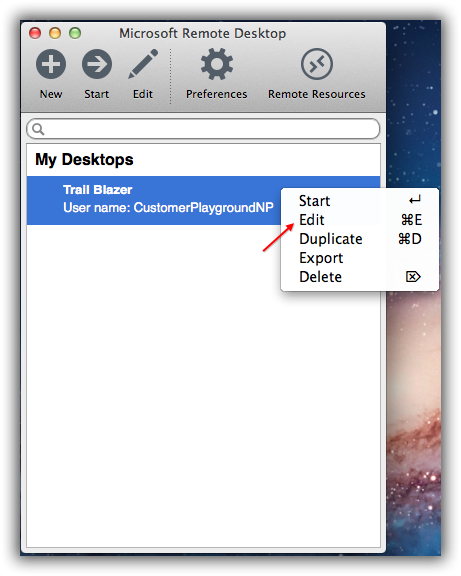

RDP is relevant now more than ever, having Microsoft’s Azure and Hyper-V platforms using it as the default remote connection protocol and having the interest in this protocol by attackers rise, both as an initial infection vector and as a propagation method. This is why the security industry needs to educate itself about it. RDP is a complex protocol with many extensions and the potential of finding new critical bugs is still high. It is now essential knowledge that is absolutely crucial for everyone in the security industry. The importance of knowing and understanding RDP has never been greater – especially in light of the recent critical vulnerabilities that were found in the protocol. In fact, there are more than 4.5 million RDP servers exposed to the internet alone, and many more that are accessible from within internal networks.
#IS THERE A NEW RDP CLIENT FOR MAC WINDOWS#
RDP is an extremely popular protocol for remote access to Windows machines. RDP Security | Recent RDP Vulnerabilities.Connection Sequence | Basic Input and Output.On remote machine (i.e workstation at office) Enable-NetFirewallRule -DisplayName "Remote Desktop - User Mode (TCP-In)" Enable-NetFirewallRule -DisplayName "Remote Desktop - User Mode (UDP-In)" To do so you need to run the following power shell commands. Enable UDP should always result in a net positive in terms of user experience. The advantage of enabling UDP is just like you are streaming a YouTube clip any missing or dropped frame does not cause an additional round-trip to try to retry and retrieve it from the server. One way to improve your RDP connection is to enable UDP instead of relying on just TCP alone. Remote Desktop - User Mode (UDP-In) True Enable UDP over RDP Since I’ve already configured to enable UDP with RDP protocol. This and the above command might yield different results on your machine than what I’m presenting you. Lastly, this command prints out in what TCP/IP stack the RDP protocol is configured to run. PSPath : \Registry::HKEY_LOCAL_MACHINE\Software\Policies\Microsoft\ Again this can tell you any misalignment in the configuration between the host and the remote. This next command prints out all the services and flags that support remote desktop. Ideally you want to say on the same version as close as possible. This will provide a good basis on how compatible between your host and remote are. This checks your current host Windows version. Get-NetFirewallRule -DisplayName "Remote Desktop - User Mode*" | ft Displayname,Enabled Get-ItemProperty -Path 'HKLM:/Software/Policies/Microsoft/Windows NT/Terminal Services/Client' Here are a few troubleshooting commands you can run on both your home and remote workstation and compare some results. This is a must-read if you are currently experiencing RDP lag, sluggish connections or random RDP drop throughout your day. Today we will explore how you can troubleshoot RDP and potentially improve your RDP connection so you can have better work from home experience. The stability of RDP thus depends on two factors your VPN connection as well as your RDP connection. Almost all of us that use RDP to remote into our workstation or work environments require some sort of VPN before making the RDP connection.

Window’s Remote Desktop has always based on local connections.


 0 kommentar(er)
0 kommentar(er)
